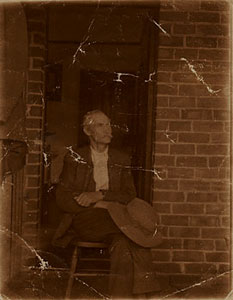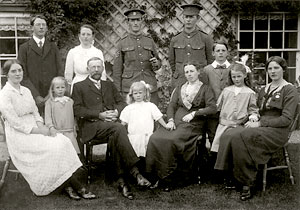Fine Photo Restoration Cate McRae
restoration of precious and historic photographs using the best digital and analogue methods






When a photograph has been scanned it is digitally restored. Apart from this scanning process, the original is not touched. I use the best digital restoration techniques that are non-destructive and are used by specialist restoration and retouching houses. Restoration can include making a faded image more vibrant, repairing blemishes and tears, re-building lost pieces of the picture, and improving the final tone of a black and white print, including any original hand colour-toning. This can be printed (at any size) on a professional Inkjet printer using specialist archival inks (K3 pigment inks) and fine art fibre baryta-based paper, or cotton rag paper, that according to the manufacturers and through independent testing appear to have a predicted longevity of between 80-100 years (and much longer if stored under correct conditions in the dark!). This is in contrast to many consumer inks and papers that have a fade-resistance of a maximum of ten years - or less. Alternatively a digitally enhanced image file can be printed in the darkroom onto tradional, for-purpose silver-gelatin (darkroom) fibre paper. This is an excellent option for the most valued photographs, and is another consideration for museum quality archives. It is only suitable for black and white images. Occasionally it can be a choice to copy images onto film with a camera and print in the darkroom, which can include archival toning using traditional analogue methods, which will offer optimum permanence.
The process used depends on the conditon of the photograph and individual requirements. The cost will vary depending on these, and every photograph and your needs will be discussed and quoted for individually.
A note on storage and display
Even the most carefully produced print, prepared with longevity in mind, will suffer from the environment.
This can be reduced by a few simple steps, which you can talk through with your framer. Unfortunately specialist materials do come at a higher price, but not always very much when you consider the overall value of your framed photograph.
keep the photograph framed under glass, with mount between, so that the glass is not touching the photograph.
use museum glass, which filters out UV light.
use acid-free mounting board front and back - known as 'archival' or 'museum' mounting board.
Have the frame sealed to protect from insects and pollutants
Avoid extreme heat, humidity & dampness.
Hang your photograph where it can be enjoyed, but steer clear of direct sunlight.
Most important - enjoy your print without becoming paranoid, but be at least aware of the above steps can help, if it is important to you that your print lasts as long as possible.
About me
I am based in London. I have come to photographic restoration through a love of history, especially family history, and through a lifelong interest and love of photography. I am a practicing photographer and have a thorough understanding of all photographic processes. In my personal work I mainly use film and traditional methods of printing in a darkroom, but I am also at home with digital methods and processes and I believe in combining the best of traditional and digital photography when appropriate. I fully understand the value of precious family photographs especially, and also those photographs that document our social history.
I have studied photography (including restoration and conservation) both full and part-time at South Thames College, Central St Martins School of Art, and Camberwell School of Art. In 2005 I was awarded the Associateship of the Royal Photographic Scociety. My personal work has received awards and public recognition.
Recent work undertaken for
Colefax and Fowler (Brook St. W1)
Furzedown Voices
private clients throughout the London area